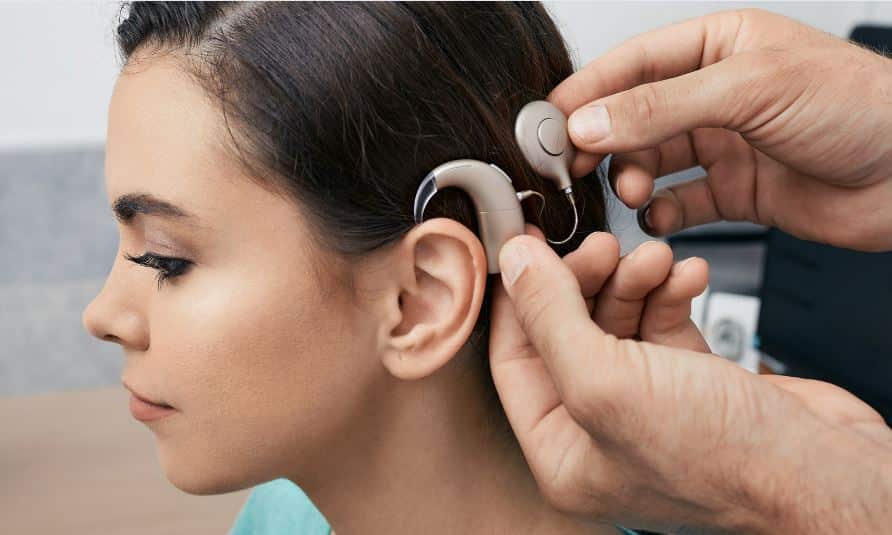by Roy Rasmussen
Use of cochlear implants is on the rise. By the end of 2010, approximately 219,000 people worldwide had received a cochlear implant, according to the U.S. Food and Drug Administration. Approximately 40 percent of children born profoundly deaf were receiving implants by the end of 2014, a rise of 25 percent in five years, prompting the Department of Health and Human Services to set a higher target for 2020. 90 percent of children and 80 percent of adults who receive cochlear implants experience an improvement in hearing, a Spanish study of 877 subjects found. But using a cochlear implant effectively and safely requires following certain guidelines.
Here are some best practices to keep your cochlear implant working properly and safely.
Preventing Impact Damage from Drops and Other Accidents
Cochlear implants are susceptible to impact damage. As St. Louis Children’s University explains, a blow to the head can damage a cochlear implant, causing a need for surgery to fix the damage. Small children, children active in sports and elderly or disabled wearers can face special risk in this area.
One solution to avoid dropping implants to the ground is wearing a strap similar to those sometimes used to hold glasses on the head. Children involved in sports should wear helmets and avoid sports that involve high risk of head trauma. Roller coasters may also pose risks of loss or damage from close head guards. While wearing implants during roller coasters is permissible provided care is taken, the safest practice is to remove them while riding.
Cochlear implants are also susceptible to damage if they fall out during sleep; they should be removed while sleeping.
Waterproofing Your CI Processor
A cochlear implant’s internal processor is surgically inserted under the skin, making it waterproof. However, the external processor is normally not waterproof and should be removed when showering or swimming. Some newer models, though, do have waterproofing options that can be used for bathing and swimming. For instance, attachments such as the AquaCase provide a waterproof case that enables implants to be safely used during water activities.
Moisture from sources such as sweat can also create problems for implants. A protective covering such as the Ear Gear can help reduce risk from sweat and other types of moisture.
Maintaining Your CI Accessories
Protective devices such as Ear Gear and the AquaCase use o-rings which may need periodic replacement. You can replace these yourself, in contrast to most other parts of cochlear implants.
Use medical-grade o-ring manufacturers such as Apple Rubber to ensure quality replacements.
Avoiding Static Electricity and Other Risks
Static electricity to the wearer by itself will not damage cochlear implants, but static discharges directly to the implant’s external speech processor unit can erase or damage the programs and maps stored in the processor. Additionally, while the internal processor has its own shock protection, shock to the external unit can travel to the internal unit.
Always ground yourself or a child wearing an implant when touching the processor during activities that can generate static electricity, such as playing with balloons, going down plastic slides, playing in plastic ball pits or using trampolines. You can also reduce other ambient sources of static electricity by taking steps such as spraying carpets with a mixture of water and fabric softener during dry months, using a humidifier or vaporizer to increase humidity, using fabric softener when doing laundry for sweaters and sheets and using anti-static computer screen shields.
Before doing MRI scans or X-rays, consult your medical provider about possible precautionary measures. When traveling through airports, do not pack your main speech processor or backup processor in checked luggage, which is X-rayed. As a precaution, place your processor in the bowls provided and hand them to security to be passed through. Carry an ID card with appropriate information in the event your implant triggers a metal detector.
“Preventing static discharges from reaching the external speech processor unit of a cochlear implant is crucial to avoid potential damage to stored programs and maps. Grounding yourself or a child wearing an implant during activities that generate static electricity, as well as taking precautions during airport travel and medical scans, can help protect the device and ensure a smooth experience.”
 Roy Rasmussen, coauthor of Publishing for Publicity, is a freelance writer who helps select clients write quality content to reach business and technology audiences. His clients have included Fortune 500 companies and bestselling authors. His most recent projects include books on cloud computing, small business management, sales, business coaching, social media marketing, and career planning.
Roy Rasmussen, coauthor of Publishing for Publicity, is a freelance writer who helps select clients write quality content to reach business and technology audiences. His clients have included Fortune 500 companies and bestselling authors. His most recent projects include books on cloud computing, small business management, sales, business coaching, social media marketing, and career planning.







Thanks for sharing this informative blog about cochlear implant. This is helpful for people who the child is suffering from hearing loss problems
Thank you for explaining that cochlear implants could easily be damaged by static discharges from the hearing aid’s external speech processor resulting in erased programs and maps necessary for the mobility of the hearing impaired. This is precisely why my mom should consider not only having hearing aids installed for my grandma but also for these hearing aids to be regularly serviced under lifetime warranty to keep it working in top shape. My mom wouldn’t want my grandma to suffer hearing loss completely and get lost when she’s window shopping downtown because of a faulty hearing aid incident.